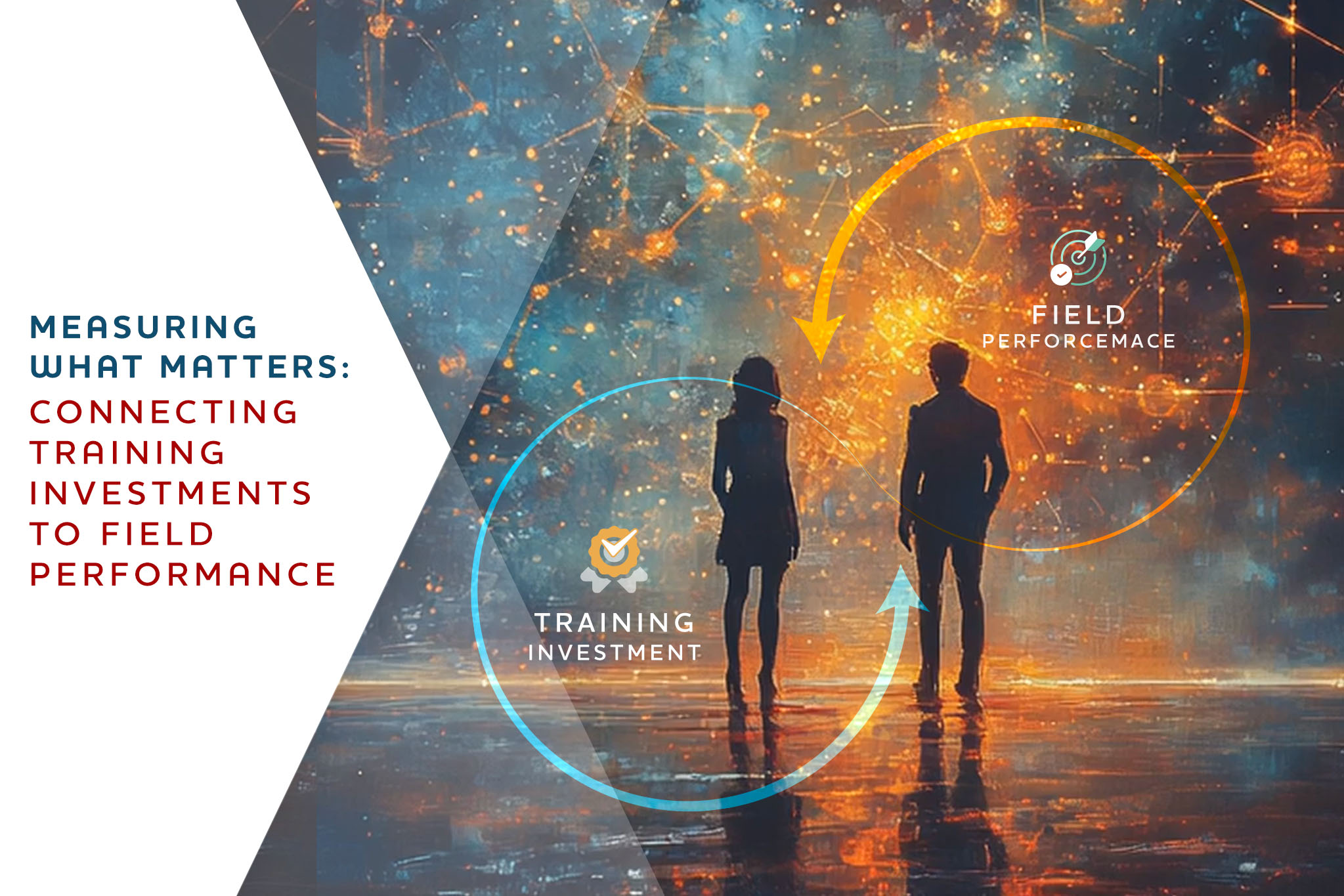Within the realm of education, the introduction of artificial intelligence (AI) -driven analytics has become a game-changer, poised to revolutionize teaching and learning methodologies. This state-of-the-art technique utilizes data analytics and Virtual Reality (VR) to create customized educational experiences, thereby greatly improving learner achievement. AI-driven analytics not only discerns the unique requirements of each learner but also forecasts future academic results, establishing itself as an essential asset in the education sector. Its significance is immense, as it lays the groundwork for a more knowledgeable and adaptable educational framework that addresses the varied needs of learners.
Understanding AI-Powered Learning Analytics
AI-powered learning analytics is a groundbreaking field that merges the capabilities of artificial intelligence (AI) and machine learning with analytics to generate insights, automate processes, deliver predictions, and drive actions for better educational outcomes. This innovative approach to learning analytics is transforming the way the corporate learning community understands and enhances learner performance and learning experiences.
Historical Overview of Learning Analytics
The field of learning analytics has evolved significantly over time, with its roots deeply embedded in various disciplines including educational research, learning and assessment sciences, educational technology, statistics, visualization, computer/data sciences, artificial intelligence, and human-centered design. Initially focused on collecting and analyzing data on online learners’ performance, behavior, and interaction with content, the arrival of AI has elevated the field to new heights, enabling more comprehensive and effective analysis of learning data.
The Basics of AI and Learning Analytics
Artificial intelligence in the context of learning analytics is broadly defined as a set of technologies that enable computers to perform tasks akin to human cognitive functions such as understanding and interpreting languages, analyzing data, and making recommendations. AI encompasses various subfields including machine learning, natural language processing (NLP), computer vision, and deep learning, each playing a crucial role in enhancing learning analytics.
Key Components and Technologies
The fundamental elements and technologies driving AI-enhanced learning analytics comprise:
The Role of AI in Modern Learning Analytics
AI has revolutionized learning analytics by enabling swift and efficient analysis of vast amounts of learner data from various sources, including learning management systems, assessments, and e-learning platforms. Machine learning algorithms can identify patterns, trends, and correlations, providing a comprehensive understanding of learner behaviors and performance. Furthermore, AI-driven learning analytics goes beyond basic data analysis by offering the ability to proactively identify performance gaps, predict potential issues, and customize learning experiences based on individual learner profiles. By leveraging AI, learning content developers can optimize learning pathways, making education more personalized and effective.
AI-powered learning analytics represent a significant advancement in educational technology, offering unprecedented insights into learner learning and performance. As the field continues to evolve, it promises to further enhance personalized learning experiences, making education more responsive and effective for learners worldwide.
Collecting and Analyzing Learner Data
Collecting and analyzing learner data is pivotal in harnessing the full potential of AI-powered analytics to elevate learner performance. This process involves meticulous planning, execution, and consideration of ethical implications. Here, we delve into the various facets of this process, including data sources and collection methods, types of data collected, analytical methods and tools, and addressing data privacy and security concerns.
Data Sources and Collection Methods
The journey toward impactful AI-powered learning analytics begins with the collection of data. Crowdsourcing emerges as a versatile method, enabling the rapid accumulation of diverse data from around the globe, which is crucial for training unbiased AI models. This method proves to be cost-effective and efficient, especially when gathering multilingual data or when faced with tight deadlines. On the other hand, in-house data collection offers unparalleled privacy and customization, allowing for a more controlled environment]. Automated data collection stands out for its speed and efficiency, significantly reducing human error in repetitive tasks. Each of these methods has its unique advantages, catering to different needs and scenarios in the educational sector.
Types of Data Collected
The scope of data collected for AI-powered learning analytics is broad, encompassing process data, performance data, and learners’ perception data. Process data includes collaborative discussions, performance data comprises final write-ups and procedural files, and perception data captures learners’ reflections. This comprehensive data collection enables a holistic view of the learning process, facilitating a deeper understanding of learner engagement, performance, and areas for improvement.
Analytical Methods and Tools
Once data is collected, the next step involves its analysis using a variety of methods and tools. A multi-method approach, including social network analysis, quantitative content analysis, and thematic analysis, offers a robust framework for interpreting learner data. Descriptive, diagnostic, predictive, and prescriptive analytics form the core analytical types, each serving a distinct purpose in unraveling the intricacies of learner data. These analytical methods, coupled with visual formats like charts and graphs, enhance the comprehensibility of findings.
Addressing Data Privacy and Security Concerns
In the era of AI-driven education, data privacy, and security are of paramount importance. Encrypting sensitive data, regular backups, and implementing multi-factor authentication (MFA) are fundamental measures to safeguard learner information. Additionally, establishing stringent access controls and conducting regular security assessments of third-party vendors are crucial steps in ensuring the integrity and confidentiality of learner data.
Incorporating AI-powered analytics into the educational landscape demands a meticulous approach to collecting and analyzing learner data. By leveraging diverse data sources, employing advanced analytical methods, and prioritizing data privacy and security, the full potential of AI can be unlocked to offer personalized learning experiences that cater to the unique needs of each learner.
Practical Applications of AI-Powered Learning Analytics
AI-powered learning analytics have significantly transformed the educational landscape, offering personalized learning experiences and enhancing the effectiveness of teaching methodologies. This section delves into the practical applications of AI-powered learning analytics across various domains, including virtual reality (VR) and AI integration, online learning platforms, and corporate training and development.
VR and AI
The integration of AI and VR technologies has revolutionized the way corporate learning and development engages with learners, transforming standard lessons into personalized and impactful learning experiences. By leveraging AI-driven data analytics in real-time, organizations can offer customized assignments and quizzes tailored to each learner’s learning style, significantly enhancing learner engagement and comprehension. Furthermore, VR technology, complemented by AI, enables the creation of immersive learning environments where learners can explore complex concepts in a hands-on and interactive manner. This unique combination not only makes learning more engaging but also facilitates a deeper understanding of the subject matter.
Enhancing Online Learning Platforms
AI-enabled online learning platforms utilize individual learner data to tailor learning content and experiences, ensuring a personalized curriculum that aligns with each learner’s pace and style. This customization improves engagement, comprehension, and retention. Additionally, AI-powered assessments dynamically adjust question difficulty based on performance, accurately identifying learning gaps and providing targeted feedback. These platforms also recommend relevant supplementary materials, enhancing the depth and breadth of learner understanding. Instant feedback on assignments and the use of AI technologies like chatbots further enrich the learning environment, keeping learners motivated and actively participating.
Corporate Training and Development
In the realm of Learning & Development (L&D), AI-based data analytics play a pivotal role in optimizing employee performance. These analytics tools provide real-time, personalized insights, enabling L&D professionals to predict trends, adapt to changes, and tailor employee development programs effectively. Adaptive learning with AI dynamically adjusts content based on individual learning patterns, ensuring efficient and personalized learning experiences. AI-driven skill assessments and predictive talent analytics empower organizations to proactively address evolving skill requirements and identify high-potential employees for succession planning. Moreover, AI in employee engagement, through sentiment analysis, offers real-time insights into workplace satisfaction, allowing for prompt responses to concerns.
AI-powered learning analytics represent a significant advancement in the field of education and corporate training. By leveraging these technologies L&D professionals can provide personalized, engaging, and effective learning experiences that cater to the unique needs of each learner or employee. As the field continues to evolve, the potential for further enhancing personalized learning and development strategies remains vast, promising a future where education and training are more accessible, inclusive, and impactful.
Future of AI-Powered Learning Analytics
The integration of AI into corporate Learning and Development is revolutionizing how organizations approach employee training and development. AI-powered learning analytics offers unprecedented insights into learner behavior, preferences, and performance, enabling more personalized and effective learning experiences.
Key Benefits:
In addition to the above key benefits, healthcare education in particular has a promising future for AI and VR. As these technologies continue to evolve, we can expect even more sophisticated and effective learning tools.
Potential advancements include:
Challenges:
The future of AI-powered learning analytics in corporate L&D looks promising. As AI technology advances, it will become increasingly adept at not only analyzing learning data but also predicting and enhancing learning outcomes. Organizations that leverage these capabilities will likely see significant improvements in employee engagement, knowledge retention, and overall performance.
Conclusion
Through the exploration of AI-powered analytics’ transformative potential in education, it becomes evident that this technological advancement is not just reshaping personalized learning experiences but is also setting new benchmarks in learner performance and educational outcomes. The integration of AI into various learning platforms, spanning from virtual reality to online courses and corporate training, underscores a major shift towards more engaged, effective, and individualized educational practices. This trend not only highlights the importance of AI in modern educational strategies but also calls attention to the need for consistent improvements in data collection, analysis, and the ethical use of AI to ensure that education becomes more accessible and inclusive for learners worldwide. The promise of AI in enhancing educational outcomes and the potential for future innovations invites a collaborative effort to realize the full potential of AI-powered learning analytics.



